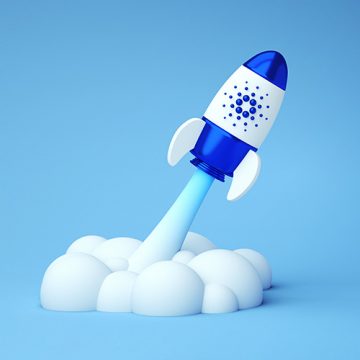
Cardano is a blockchain platform meant for creating smart contracts and decentralized apps. Thanks to being fast and scalable, it can compete with Ethereum.
Cardano project history
The platform was created by Charles Hoskinson, who also founded Ethereum alongside Vitalik Buterin and six other experts. In 2014, Hoskinson left Ethereum, created his own project – Cardano – and started working on it actively.
By an IPO, the platform gathered about $80 million in the BTC. The project was officially launched in 2017, and coins got on sale on 1 October already.
Cardano uses its own token ADA that has confidently got on the list of Top-10 cryptocurrencies with the largest capitalisation. Instead of classic mining, the coins are created by so-called forging, based on the Proof-of-Stake (PoS) algorithm.
The ADA reached its high at the beginning of September 2021 when it rose to almost $3.1. However, the coin started falling and hit the low of $0.8.
The token got its name after a famous mathematician Ada Lovelace. The minimal unit of the ADA – 0.000001 of coin – is called Lovelace. The project itself is is named after an Italian mathematician Girolamo Cardano who got in the history of cryptography because he created the Cardano Grid – a device for ciphering messages.
Cardano development
The development of Cardano can be divided into 5 stages, or epochs. Each stage is worked on simultaneously, while new functions are implemented one by one. Creators of the project never name the exact dates when new opportunities will appear.
Stages of Cardano development
- The Byron epoch. They added the opportunity to buy and sell the ADA, the mobile and desktop wallets Yoroi and Daedalus. The network remained centralized.
- The Shelley epoch. The network was expanded and decentralized; reward for storing coins was added.
- The Gaugin epoch. This is the current stage of the project. Decentralized apps (DApps) and smart contracts are created. Native tokens are added. Some say that at this stage, Cardano is trying to attract investors by shooting troubles that other networks – Ethereum and Ripple – have.
- The Bashyo epoch. The network will be optimized, the block will be expanded, and scalability will be improved thanks to conveyor processing. Implementing sidechains and optimizing out-of-network calculations are planned. As you remember, a sidechain is a so-called auxiliary blockchain thanks to which tokens from one blockchain can be safely used in another one.
- The Voltaire epoch. The network will be self-sufficient, and the members of the community will make decisions about managing Cardano. The project will reach the level of self-sufficiency and become absolutely free from the manager company.
Cardano characteristic features
This is the first blockchain platform based on a research approach. A lot of researchers work on this. According to Charles Hoskinson, the smart contract platform has unique functions, unavailable in any other network.
The developers are now focused on three main characteristics of Cardano: scalability, compatibility, and stability. The project uses sidechains, improving compatibility not only with other blockchain networks but also with other financial structures. As for control over the financial side of the network, it will be a task for users of the network.
The structure of Cardano is planned to consist of several levels. For example, Cardano Settlement Layer will deal with crypto only, and Cardano Computation Layer – with DApps and smart contracts.
One more characteristic is that the network is based on the Ouroboros protocol. Safety is provided by most up-to-date algorithms.
Main advantages of Cardano
In 2020, Cardano got onto the top-50 list of the most innovative crypto projects. NASDAQ called the ADA best green token to buy: it is million times more efficient than the Bitcoin network.
The project realizes a unique staking model, chiefly focused on ordinary users instead of major investors. This approach allows for making additional money on staking even with small wallets.
Fast and cheap transactions, a trustworthy blockchain system with high-quality protection from fraud – all this makes certain experts call Cardano an alternative to Ethereum.
How to buy Cardano
Like any other crypto asset, the ADA can be bought on large crypto exchanges. The token is usually traded against the Bitcoin, Ethereum, and Tether.
It can also be bought for fiat money – USD, EUR, and GBP. Also, online exchanges and crypto wallets support the ADA. RoboForex supports trading the ADA/USD pair.
Closing thoughts
The ADA crypto takes a well-deserved place on the top-10 list of assets with the largest capitalisation. The project has not reached its final stage of development but yet attracted the attention of investors by a unique staking model. However, note that this model is already being used by other networks – Solana, Terra, and Ethereum 2.0.
For the success of Cardano, it is vital to complete development and launch all the stages of development. Users notice that the coin has growth potential, and all which is necessary is to follow the plan step by step.
The recent decline of the ADA is a good opportunity to look for signals to buy; it is always better to invest in an underpriced asset than in an overpriced one.
The post Cardano Overview: How to Buy Crypto appeared first at R Blog – RoboForex.
